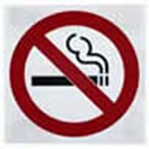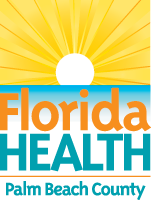Cessation
Florida Department of Health in Palm Beach County
- 561-840-4500
- CHD50contactus@flhealth.gov
-
Mailing Address
800 Clematis St.
West Palm Beach, FL 33401

About Cessation
Tobacco use remains the number one cause of preventable deaths in American, killing 440,000 Americans annually – more than murders, alcohol, illicit drugs, motor vehicles, suicide, homicides, and AIDS combined. According to the 2007 Behavioral Risk Factor Surveillance Survey, 17.5% of Palm Beach County’s adult population smokes cigarettes. Research shows that 70% of current tobacco users want to quit. Combination a cessation program (such as a group class or telephone counseling via the Florida Quitline) with pharmacotherapy (such as the nicotine patch or other products) greatly increases success rates.
Why Do People Use Tobacco?
With what is known about how tobacco damages the body, people may wonder why some individuals continue to smoke. Keep in mind, nicotine is a drug – a drug that is more addictive than heroine. Many people continue to use tobacco because of this strong addiction to nicotine. Others still will state that they use tobacco products out of habit; in social settings, to relieve stress, to relax, or because they love the taste.
Effects of Tobacco Use
There’s no question about it – tobacco is extremely hazardous to one’s overall well-being.
Benefits of Cessation
Some people think benefits to quitting only occur years after you have done so – this is not true! The timeline below lists just some of the immediate benefits to cessation.
In 20 minutes, your blood pressure and pulse rate decrease, and the body temperature of your hands and feet increase.
At 8 hours, the carbon monoxide level in your blood decreases to normal levels, thus allowing your blood oxygen level to return to normal as well.
At 24 hours, your risk of having a heart attack decreases.
At 48 hours, your sense of taste and smell is enhanced.
Between 2 weeks and 3 months, circulation improves, phlegm production decreases, and coughing and wheezing don’t occur as often. Lung function increases significantly within a few months.
In 1 to 9 months, coughs, sinus congestion, fatigue and shortness of breath decrease as you continue to see significant improvement in lung function. Cilia, tiny hair-like structures that move mucus out of the lungs, regain normal function.
In 1 year, risk of coronary heart disease and heart attack is reduced to half that of a smoker.
Between 5 and 15 years after quitting, your risk of having a stroke returns to that of a non-smoker.
In 10 years, your risk of lung cancer drops, though it remains higher than that of a non-smoker. Additionally, your risk of cancer of the mouth, throat, esophagus, bladder, kidney and pancreas decrease.
In 15 years, your risk of coronary heart disease and heart attack in similar to that of people who have never smoked.
How to Handle Nicotine Withdrawal and Cravings
Some people experience nicotine withdrawal and cravings once they quit. Keep in mind that not everyone experiences nicotine withdrawal and cravings, and not everyone experiences all of the symptoms. Here are a list of symptoms that may occur, and methods to relieve their discomfort.
| Symptom | Relief |
| Irritability | Walks, hot baths, relaxation, NRT |
| Fatigue | Naps, time-management, getting eight hours of sleep |
| Insomnia | Relaxation; avoidance of caffeine after 3 PM |
| Dry throat/cough | Drink adequate fluids (especially water) |
| Lack of concentration | Time-management; avoid procrastination |
| Constipation/gas/stomach pains | Incorporate fresh fruits and vegetables into your diet. Be sure to have the recommended fiber intake and drink at least 64-ounces of water. |
| Hunger | Drink water; have low-fat, nutritious snacks such as nuts, fruits, and vegetables |
| Cravings for cigarette | Wait – think about why you are craving a cigarette at this moment. Is it the time of day when you would normally smoke? Are you nervous? Bored? Take a short walk outside or engage in an activity to take your mind off the desire. The urge for a cigarette normally lasts only for a few minutes. |
Planning Your Quit Strategy
Like most things in life, you must plan to quit in order to be successful at it. Additionally, you must want to quit using tobacco. Having a plan ensure that you know how to handle situations where tobacco is present and cravings for tobacco, making you less likely to relapse.
Decide why it is important for you to quit. This needs to be a personal decision for yourself because let’s be honest – how likely are you to quit only because your doctor told you to do so? Reason such as “I don’t want to develop lung cancer” and “I want to be able to play in the park with my children without getting tired” are good reasons. Generic reasons such as “for my health” and “to save money” often make it hard for you to visualize exactly why you want to quit.
Use the buddy system. Quitting is much easier when you have someone to help you through the process. Your buddy will be vital in helping through those tough times when you are thinking about having a cigarette. If your buddy is a tobacco user who is also looking to quit, you will be just as valuable to them. Often times, just talking to your buddy will help the cravings disappear.
Set a date and write it down. By writing it down, you are holding yourself accountable. This also allows you to properly prepare for quitting.
Inform family and friends of your decision to quit. Informing family, friends, and coworkers of your intent to quit will provide extra encouragement and support.
Get rid of tobacco paraphernalia. Discard of your cigarettes, lighters, match books, and ashtrays. Clean out your car and wash all of your clothing.
Establish a reward system for yourself. Having mini-rewards will provide encouragement and reinforce the fact that you can accomplish a tobacco-free life. Reward yourself for refraining from tobacco use for an hour, one day, one week, one month, two months, etc. The reward can be something as small as allowing yourself to sleep in on the weekends, or something as big as a Caribbean getaway (using the money you saved from not purchasing tobacco).
Begin an exercise routine. Having an overall healthy lifestyle will make it less likely that you will engage in tobacco use again, as it impairs lung capacity and athletic ability.
Where to get help
The Florida Department of Health’s Quitline provides eight weeks of free nicotine replacement therapy to Florida residents ages 18 and up. Free telephone counseling is available to Florida residents ages 11 and up. For more information, Call 1-888-U-CAN-NOW (1-888-822-6669)
Office Location
Florida Department of Health in Palm Beach County
800 Clematis Street
West Palm Beach, FL 33401
Contact Person
Nicolette Sas, HCMBA
Health Education Consultant
(561)671-4083





Connect with DOH